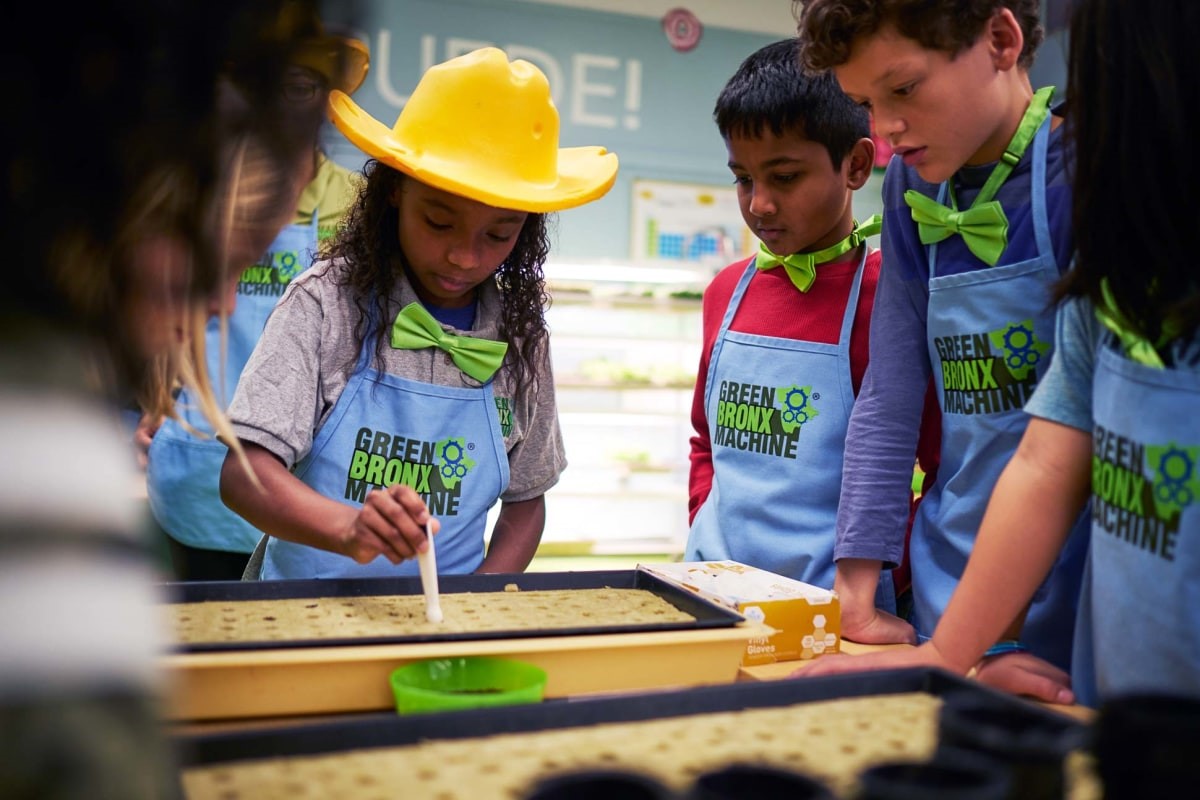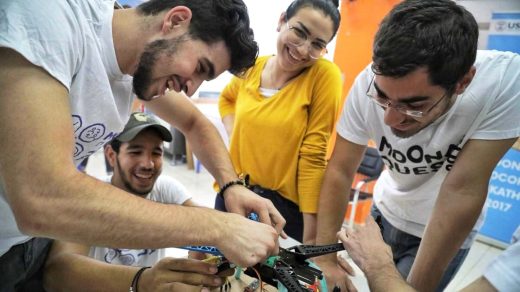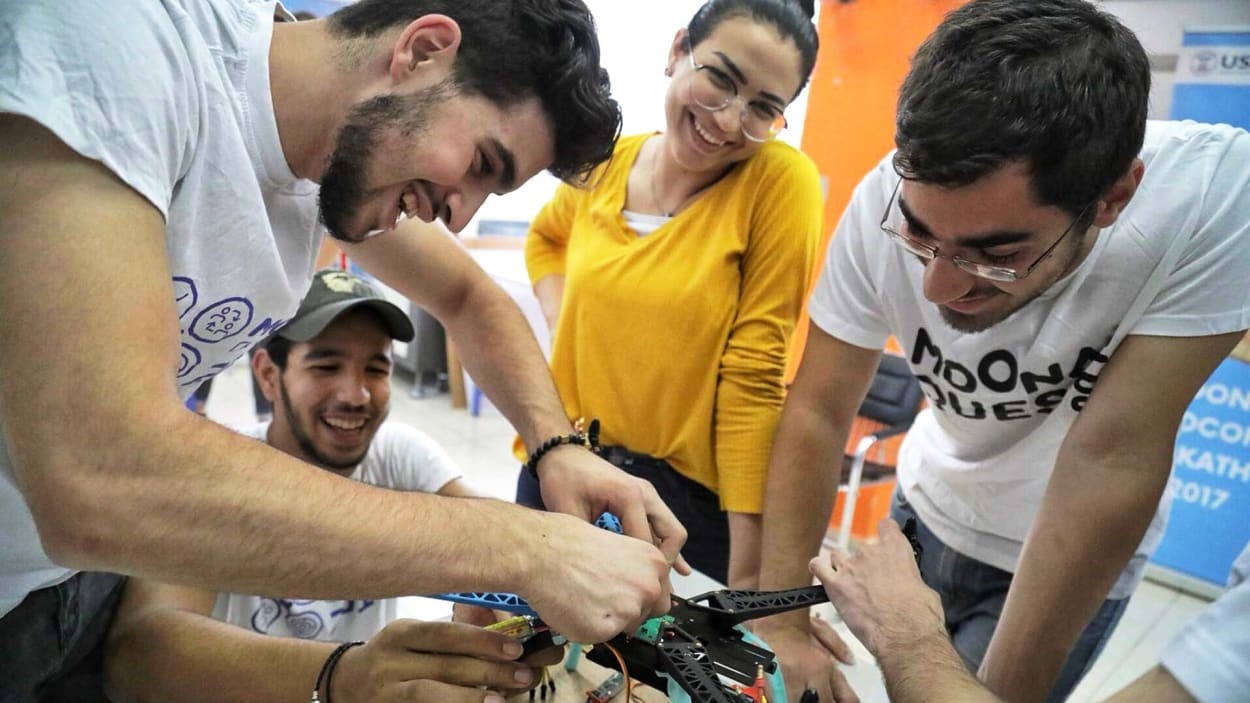A new national STEM challenge hopes to reinvent the science fair for the 21st century (exclusive)
A team including former MythBusters host Kari Byron and Bizarre Foods’ Andrew Zimmern hope to broaden the reach of science fairs.
Starting October 4, the National STEM Challenge will invite students in grades 6 through 12 to submit projects in categories such as environmental stewardship, tech for good, future food, and space innovation. Students and teachers can visit the challenge site starting September 12 to learn details about the event. Champions from each U.S. state will be invited to present their projects at a new National STEM Festival in Washington, D.C., in April.
“It could be an algorithm,” says Byron. “It could be an app. It could be actually growing food in your classroom.”
The challenge is run by EXPLR, an educational media company cofounded by Byron, Zimmern, and CEO Jenny Buccos. The festival will be co-presented by EXPLR and the U.S. Department of Education. Byron, who previously hosted the National Science Fair with Bill Nye, says the challenge is intended to appeal to students from all backgrounds, including those who may not think of themselves as traditional science students.
“Until I was on MythBusters, I didn’t even know I liked science,” she says. “I want to talk to 13-year-old me, and I want to show her that science is for everyone.”
Women make up less than 30% of the world’s researchers, according to the United Nations Educational, Scientific and Cultural Organization (UNESCO). Underrepresented racial and ethnic groups that make up 27% of the population constitute only 11% of STEM workers, according to the event organizers.
“This incredible public/private partnership demonstrates that our government can break real ground by advancing an agenda that puts science and tech where they should be: front and center of our national conversation around education and the future of our young people,” Zimmern writes in an email to Fast Company. “More importantly, it helps close the gaps that exist amongst percentages of women and people of color with careers in the sciences.”
Projects will be accepted from students in all 50 states, D.C., U.S. territories, Department of Defense schools, Bureau of Indian Education schools, and nonpublic schools from October 4 through November 12. The projects are required to be genuinely innovative—”We’re not talking the baking soda volcano,” quips Buccos—and they can’t be purely theoretical, since they’re intended to tackle real-world problems.
Entries in the form of three-slide PDFs (rather than the science fair poster boards of yore) will be evaluated by experts in the various categories, ranging from university researchers to representatives in the food industry, with 12 finalists and ultimately four champions chosen from each division.
Champions will have their travel and accommodations paid for so they can present their projects at the National STEM Festival, and other entrants will be chosen to have their projects filmed locally and showcased online. And every student who submits an entry will receive “meaningful feedback” on their project, says Buccos, a departure from some previous science competitions where entries might just receive form letter rejections.

“That meaningful feedback or conversation that a child gets may keep them engaged longer,” she says.
It’s no small feat, considering the challenge aims to attract upwards of 10,000 entries, thanks to promotional help from a corps of science communicators, educators, and influencers who Buccos says have a combined social-media reach of 30 million. It also will likely help that the challenge’s categories of health and medicine and powering the planet are ones that many students already find relevant, considering the challenges and opportunities their generation faces.
“These are topics that kids are already interested in and engaging in inside and outside of school,” Buccos says.
The organizers hope the challenge will encourage students to see a place for themselves in STEM careers—and realize the broad applicability of science knowledge.
“Your healthcare is better if you understand STEM,” Buccos says. “Every time you go into the voting booth, STEM is on the ballot.”
(22)



